Can Blockchain Break Big Tech's Social Media Monopoly?

TL;DR: Neural Architecture Search (NAS) is transforming deep learning by automating model design—reducing search times from thousands of GPU days to hours and democratizing access via platforms like Google AutoML, AutoKeras, and H2O.ai. While NAS discovers architectures that rival or surpass human designs, it introduces trade-offs: high computational costs, environmental impact, reduced interpretability, and overfitting risks. As machines increasingly design models, practitioners must develop hybrid intelligence—blending algorithmic search with human judgment, rigorous validation, and ethical oversight to build AI that's not just accurate, but transparent and trustworthy.
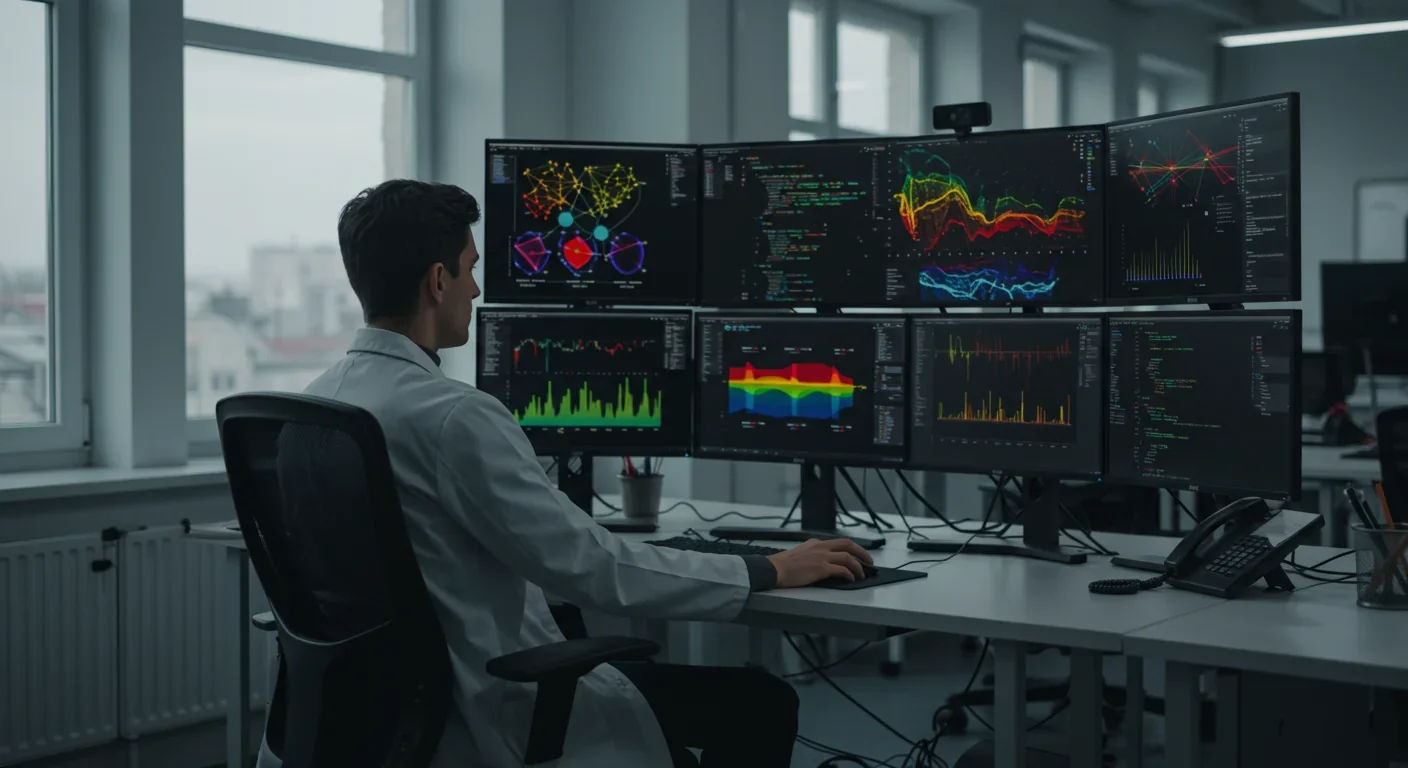
Within the next five years, the way we build AI models will be unrecognizable. Not because of a breakthrough in computing power or a revolutionary new algorithm, but because machines are now designing themselves. Neural Architecture Search (NAS)—the technique that lets AI systems automatically discover optimal model architectures—has quietly crossed from research labs into production AutoML platforms used by thousands of data scientists daily. Where manual model design once consumed weeks of expert time and required deep intuition about layer depths, activation functions, and skip connections, NAS can now explore billions of architectural combinations in hours, often finding structures no human would have imagined. The question is no longer if your next model will be designed by an algorithm, but which AutoML platform will design it—and whether you'll understand what it built.
In 2018, a team at Google published DARTS (Differentiable Architecture Search), a paper that fundamentally redefined what was possible in automated deep learning. Earlier NAS methods relied on reinforcement learning or evolutionary algorithms, requiring 2,000 to 3,150 GPU days to find a single high-performing architecture—effectively pricing out all but the wealthiest research labs. DARTS slashed that timeline to 2–3 GPU days by transforming architecture search from a discrete combinatorial problem into a continuous optimization problem solvable with gradient descent.
The innovation was elegantly simple: instead of evaluating thousands of complete architectures one by one, DARTS assigned continuous weights to every possible operation (convolution, pooling, skip connection) at each layer. During search, all operations ran in parallel within a "supernetwork," with their outputs weighted by learned parameters. Gradient descent then optimized these weights to identify which operations mattered most. Once training completed, the system pruned low-weight operations and extracted a discrete, deployable architecture. This continuous relaxation—treating architecture as a differentiable function rather than a discrete choice—enabled NAS to leverage the same backpropagation machinery that trains neural networks, compressing months of search into days.
But speed wasn't the only gain. DARTS-discovered architectures matched or exceeded human-designed models on benchmark datasets. NASNet, an early NAS success, achieved 82.7% top-1 accuracy on ImageNet while using 28% fewer FLOPs than the best hand-crafted models of its time. By 2025, NAS-generated architectures like EfficientNet and YOLO-NAS have become production standards, outperforming manual designs while consuming fewer computational resources. The message is clear: algorithmic search can now rival—and often surpass—human expertise in one of the most specialized corners of machine learning.
The story of NAS is inseparable from the broader arc of automation in technology. Just as the printing press transferred the labor of scribes to machines, and the assembly line replaced artisan craft with standardized production, NAS represents the latest chapter in humanity's centuries-long project of delegating skilled work to systems that can perform it faster, cheaper, and more consistently.
In the early 2010s, deep learning was an artisan's craft. Designing a convolutional neural network required intimate knowledge of vanishing gradients, receptive fields, and the subtle interplay between depth and width. Researchers like Geoffrey Hinton and Yann LeCun spent years hand-tuning architectures, guided by intuition honed through decades of experimentation. Each breakthrough—AlexNet's use of ReLU activations, ResNet's skip connections, Inception's multi-scale convolutions—emerged from human creativity and domain expertise.
But as datasets grew larger and tasks more diverse, the manual approach began to buckle. Training a state-of-the-art model required not just expertise but trial and error: adjusting layer counts, testing activation functions, re-running experiments for days or weeks. The process was slow, expensive, and inaccessible to anyone without a PhD and a GPU cluster. Worse, it was increasingly clear that the space of possible architectures was too vast for humans to explore systematically. With tens of thousands of design choices—layer types, widths, depths, connection patterns—even expert intuition could only sample a tiny fraction of possibilities.
Enter automation. In 2017, Google's AutoML project demonstrated that reinforcement learning agents could search architecture space more exhaustively than any human team. By 2020, weight-sharing techniques like ENAS (Efficient Neural Architecture Search) had reduced search costs by 1,000-fold, training a single supernetwork and extracting multiple candidate architectures from it. DARTS pushed further, making search fully differentiable and collapsing timelines to days. By 2023, zero-shot NAS methods like Weighted Response Correlation (WRCor) eliminated training entirely, ranking architectures in milliseconds using statistical proxies computed from random input batches.
This trajectory mirrors earlier technological shifts. The Jacquard loom automated weaving, threatening textile workers but democratizing fabric production. The calculator replaced human "computers," enabling scientific advances that would have been impossible with pen and paper. NAS follows the same pattern: it threatens the expertise of model designers even as it empowers non-experts to deploy sophisticated AI. The democratization is real—platforms like AutoKeras and Google AutoML put state-of-the-art model design within reach of anyone with a Python script and a dataset—but it comes with trade-offs we're only beginning to understand.
To grasp how NAS works, imagine you're designing a neural network from scratch. At each layer, you must choose an operation: a 3×3 convolution, a 5×5 convolution, max pooling, or perhaps a skip connection that bypasses the layer entirely. With 10 layers and 8 operation choices per layer, you face 8^10 ≈ 1 billion possible architectures. Evaluating each one—training it to convergence, measuring accuracy—would take centuries of GPU time.
NAS solves this by never committing to a single choice during search. Instead, it builds a supernetwork containing all possible operations at every layer, running them in parallel and mixing their outputs using learned weights. These weights—call them α—start uniform (every operation equally likely) and evolve via gradient descent. If 3×3 convolutions consistently improve accuracy, their weights α rise; if skip connections hurt performance, their weights fall toward zero. After thousands of training steps, the weights reveal which operations matter. The system then "discretizes" the architecture by keeping only the highest-weighted operation at each layer, pruning the rest.
This continuous relaxation is DARTS' core insight. Mathematically, it transforms architecture search from a discrete optimization problem—finding the best subset of operations—into a continuous one: optimizing a set of real-valued weights. The objective becomes a bilevel optimization: the inner loop trains the model weights w to minimize loss given the current architecture α, while the outer loop adjusts α to find the architecture that, once fully trained, achieves the lowest validation error. DARTS approximates this by alternating single-step updates: one gradient step on w (train the model), one step on α (improve the architecture), repeat.
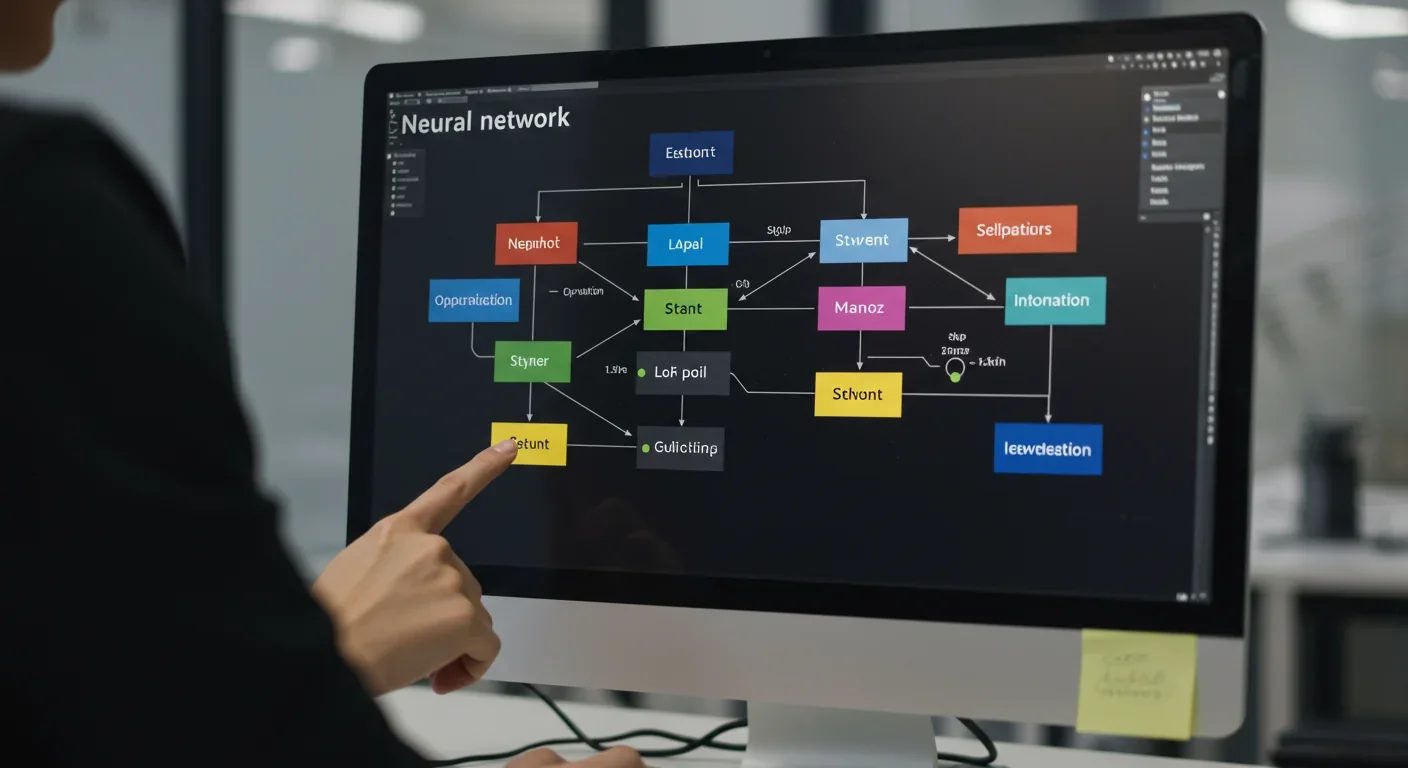
Critically, this means NAS leverages the same gradient-based machinery—backpropagation, stochastic gradient descent—that powers all modern deep learning. No reinforcement learning, no evolutionary search, just calculus. The result is speed: DARTS completes architecture search in 2–3 GPU days, compared to thousands for earlier methods. FBNet, a mobile-optimized NAS framework, achieved this with 400× less search time than reinforcement-learning-based approaches while discovering models that outperformed MobileNetV2 and mNASNet on ImageNet.
But efficiency gains come with risks. The continuous relaxation introduces a "discretization gap": the best continuous architecture (weighted mix of all operations) may differ from the best discrete one (single operation per layer). DARTS is also prone to "skip dominance," where skip connections—computationally cheap and easy to optimize—dominate the learned architecture, producing shallow networks that underperform. Fixes like smooth activation regularization (SA-DARTS) and progressive operation pruning (DARTS+) mitigate these issues by penalizing trivial solutions and gradually narrowing the search space, but they add complexity and hyperparameters of their own.
NAS isn't just changing how we build models—it's reshaping who can build them and where they're deployed. Consensus Corporation, a financial analytics firm, slashed deployment time from 3–4 weeks to 8 hours using AutoML. Trupanion, a pet insurance company, now identifies two-thirds of customers likely to churn before they leave, enabling proactive retention. An e-commerce startup used Google AutoML to deploy a product recommendation engine in weeks, a task that would have required months of manual experimentation and a team of ML engineers.
The industry impact extends beyond timelines. AutoML platforms powered by NAS—Google Cloud AutoML, H2O.ai's Driverless AI, AutoKeras, Microsoft Azure AutoML—are democratizing access to cutting-edge model design. A data scientist with limited deep learning expertise can now upload a dataset, specify a task (image classification, text sentiment analysis), and receive a trained, optimized model within hours. The platform handles architecture search, hyperparameter tuning, and even deployment, abstracting away the complexity that once required years of study to master.
This democratization is accelerating AI adoption across sectors. In healthcare, NAS-enabled AutoML is designing diagnostic models from medical imaging datasets, reducing the barrier for hospitals to deploy AI without hiring specialized researchers. In agriculture, farmers are using AutoML to build crop disease classifiers from smartphone photos, leveraging NAS to discover lightweight architectures that run on edge devices. In finance, risk modeling teams are automating model refresh cycles, using NAS to adapt architectures as market conditions shift—a process that once required quarterly manual redesigns.
Yet this accessibility comes with a cultural shift: the locus of expertise is moving from architecture design to problem formulation and data curation. The most valuable skill is no longer knowing whether to use a ResNet or an Inception block, but understanding which data features matter, how to frame the task, and how to validate that a model's predictions are trustworthy. AutoML frees practitioners from low-level design decisions, but it doesn't eliminate the need for judgment—it shifts judgment to higher-level questions about goals, constraints, and risks.
The job market is already adjusting. Demand for "model architects"—specialists in hand-crafting neural networks—has plateaued, while demand for "ML engineers" with skills in data pipelines, model deployment, and system integration continues to grow. Universities are revising curricula, de-emphasizing manual architecture design in favor of end-to-end ML workflows, AutoML literacy, and ethical AI deployment. The message: in a world where algorithms design models, humans must focus on the questions algorithms can't answer—why to build a model, what it should optimize for, and whether its predictions align with human values.
NAS's most immediate benefit is speed. Where a manual architecture search might involve training dozens of candidate models over weeks, NAS explores thousands of architectures in days—or, with zero-shot methods, ranks architectures in minutes without training any model at all. Weighted Response Correlation (WRCor), a 2025 zero-shot NAS method, evaluates architecture quality by computing correlation matrices of layer activations on random inputs, achieving a 22.1% ImageNet error rate in just 4 GPU hours. That's faster than most human teams can even set up an experimental pipeline.
Speed translates to scale. NAS enables rapid iteration: test a hypothesis, refine the search space, re-run overnight. It also enables personalization at scale—automatically designing task-specific architectures for hundreds of different datasets or deployment targets. YOLO-NAS, an object detection model discovered via quantization-aware NAS, was specifically optimized for INT8 inference on edge devices, achieving higher accuracy and lower latency than YOLOv8 after quantization. No human team would manually design hundreds of variants for different hardware platforms, but NAS can.
Beyond efficiency, NAS discovers architectural patterns humans wouldn't intuitively design. NASNet introduced a "reduction cell" that aggressively downsamples feature maps while preserving information—a structure that became standard in later architectures. EfficientNet's compound scaling (simultaneously adjusting depth, width, and resolution) emerged from NAS and now underpins mobile and embedded AI. These aren't incremental tweaks; they're fundamentally new design principles that shifted how the field thinks about architecture.
NAS also mitigates human biases. Manual design tends to converge on familiar patterns—ResNet-style skip connections, Inception-style multi-scale convolutions—because they're well-understood and easy to debug. NAS, unconstrained by convention, explores unconventional configurations: asymmetric layers, sparse connectivity, mixed-precision operations. Some discoveries fail, but others—like inverted bottleneck blocks in MobileNet—became foundational.
Finally, NAS lowers the barrier for domain-specific AI. Researchers studying eye movement recognition used EM-DARTS, a hierarchical NAS method, to discover architectures tailored to gaze-tracking data, achieving state-of-the-art error rates (0.0453 on GazeBase, 0.0377 on JuDo1000) without manually designing a single layer. Climate scientists used transfer-learning-enhanced NAS to build solar irradiance forecasting models, reducing search time by 89% while improving accuracy. In each case, NAS adapted to the task's unique structure—something manual design struggles with when data or objectives deviate from standard benchmarks.
For all its promise, NAS carries significant risks. The most immediate is computational cost. While DARTS reduced search time from thousands to single-digit GPU days, that's still expensive—especially for organizations without cloud budgets. Random search NAS, the simplest strategy, can require hundreds to thousands of GPU days. Even efficient methods like ENAS, which achieved a 2.89% CIFAR-10 error in 1,000-fold fewer GPU hours than NASNet, still demand resources beyond the reach of many practitioners. AutoML vendors partially absorb this cost, but usage-based pricing can spiral: Google AutoML, affordable for small projects, becomes costly at scale.
Cost isn't just financial—it's environmental. Training models generates carbon emissions, and NAS multiplies that footprint by training (or evaluating) hundreds of candidates. A single ImageNet architecture search can consume as much energy as a transatlantic flight. As NAS adoption grows, so does its climate impact, raising ethical questions about whether automated search justifies its environmental cost—especially when the performance gains over manual design are often marginal.
Interpretability is another casualty. NAS-generated architectures are often complex and idiosyncratic, combining operations in ways that defy intuitive explanation. A human-designed ResNet is conceptually simple: stack residual blocks, each with skip connections that ease gradient flow. A DARTS-discovered architecture might interleave 3×3 and 5×5 convolutions, insert asymmetric pooling layers, and use skip connections selectively—patterns that work empirically but resist principled understanding. This opacity is a barrier in regulated industries like healthcare and finance, where model decisions must be explainable to auditors or patients.
Worse, NAS architectures can be brittle. The continuous relaxation in DARTS optimizes for validation accuracy during search, but the discretized architecture—pruned to a single operation per layer—may generalize poorly to new data. This "discretization gap" means NAS can overfit the validation set, producing models that excel on the search task but falter in production. SA-DARTS mitigates this with smooth activation regularization, which penalizes architectures that rely too heavily on a single operation, but the risk remains.

Overfitting manifests in subtler ways, too. If architecture parameters α are optimized on the same data used to train weights w, α can exploit dataset quirks rather than learning generalizable patterns. DARTS combats this by splitting data: architecture search uses a validation set, final training uses a separate test set. But when datasets are small, this split reduces training data, degrading performance. Early stopping—halting search when validation accuracy plateaus—helps, but can prematurely terminate promising search trajectories, locking in suboptimal architectures.
Finally, there's the "black box" problem: users often don't understand why an architecture works. A data scientist using AutoKeras can export the best model and inspect its layer structure, but that reveals what the model is, not why it outperformed alternatives. Did NAS discover a fundamental insight, or overfit to noise? Without interpretability tools—attribution methods, architecture visualization, sensitivity analysis—it's hard to know. This lack of transparency breeds mistrust, especially when models fail in unexpected ways.
NAS has ignited a quiet geopolitical competition. Google's AutoML, powered by reinforcement-learning-based NAS, dominated early adoption in North America, embedding itself in enterprise workflows via Google Cloud. But China's tech giants—Alibaba, Baidu, Tencent—have invested heavily in NAS research, optimizing for mobile and edge deployment scenarios critical to Asia's device ecosystem. Alibaba's AlphaGAN, a differentiable NAS method for generative models, reduced search time by 50% compared to evolutionary methods, positioning China as a leader in automated generative AI.
Europe, meanwhile, has prioritized interpretable NAS. The EU's AI Act mandates explainability for high-risk AI systems, pushing European researchers to develop NAS methods that produce understandable architectures. Symbolic Knowledge Injection (SKI)—a hybrid approach that combines NAS with domain knowledge encoded as logical rules—has gained traction in healthcare and finance, where accuracy must be balanced with transparency. On the Census Income dataset, SKI-enhanced neural networks improved accuracy from 85.52% to 85.85% while maintaining rule-based interpretability.
This divergence reflects deeper cultural values. Silicon Valley's ethos—"move fast, optimize for performance"—aligns with black-box NAS methods that prioritize accuracy over explainability. Europe's precautionary principle favors hybrid intelligence, blending algorithmic search with human oversight. China's focus on deployment at scale drives quantization-aware NAS and edge-optimized architectures. The result is a fragmented ecosystem: different regions adopt different NAS paradigms, leading to incompatible toolchains and divergent best practices.
International collaboration on NAS remains limited. Open-source frameworks like AutoKeras and NAS-Bench (a precomputed search space for benchmarking) have facilitated some knowledge transfer, but proprietary platforms—Google AutoML, H2O.ai, AWS SageMaker—lock users into vendor ecosystems. Researchers in resource-constrained regions face barriers: access to GPU clusters, expensive API quotas, and paywalled research papers limit participation. As NAS becomes infrastructure, these disparities risk entrenching global AI inequality, concentrating automated model design capabilities in wealthy institutions and countries.
As NAS matures, practitioners must develop new literacies. Algorithmic literacy—understanding how NAS searches, what biases it carries, and when it's likely to fail—will be as critical as coding skills are today. But equally important is human literacy: the ethical reasoning, domain expertise, and contextual judgment that algorithms lack. Effective AI deployment in the NAS era requires both—what some researchers call "double literacy" or "hybrid intelligence."
Practically, this means learning to define search spaces, investing in data quality, validating relentlessly, embracing hybrid approaches that combine NAS with human priors, and developing deployment pipelines. NAS accelerates model discovery, but deployment—model serving, monitoring, versioning—remains manual. The bottleneck is shifting from design to deployment; future roles will emphasize end-to-end ML engineering over architecture expertise.
For organizations, the strategic imperative is to experiment early. Start with low-stakes use cases—internal analytics, non-customer-facing tools—to build fluency with AutoML platforms. Compare Google AutoML (best for rapid prototyping, vendor lock-in risk), H2O.ai (open-source, multi-cloud, steeper learning curve), and AutoKeras (deep learning focus, requires Python proficiency). Track not just model accuracy but time to deployment, retraining costs, and interpretability—the metrics that matter in production.
Above all, resist the temptation to treat NAS as a black box. Export architectures, visualize them, interrogate why they work. Build institutional knowledge around which search strategies succeed for your tasks. NAS should augment human expertise, not replace it—the most successful teams will be those that treat automated search as a collaborator, not a substitute.
Neural Architecture Search is not just a tool—it's a preview of a future where machines design machines, where the expertise required to build AI is increasingly algorithmic rather than human. By 2030, the majority of production deep learning models will likely be NAS-generated, discovered by platforms that search faster and more exhaustively than any human team. The data scientist's role will shift from architect to curator: defining objectives, validating outputs, and ensuring that automated decisions align with human values.
This transition is neither utopian nor dystopian—it's pragmatic. NAS democratizes access to state-of-the-art AI, enabling breakthroughs in climate science, healthcare, and education that would be impossible with manual methods. But it also concentrates power in the hands of platform vendors, raises environmental costs, and introduces new risks around interpretability and overfitting. The challenge ahead is not whether to adopt NAS—its advantages are too compelling—but how to govern it: ensuring transparency, accessibility, and accountability as model design becomes automated.
The question for every organization and researcher is no longer if NAS will reshape your work, but when—and whether you'll shape that transformation or be shaped by it. The tools are ready. The platforms are mature. The only variable left is you: will you learn to speak the language of automated architecture search, or will you find yourself obsolete, watching as algorithms design the future you once built by hand? The choice, for now, remains human. But the window is closing fast.
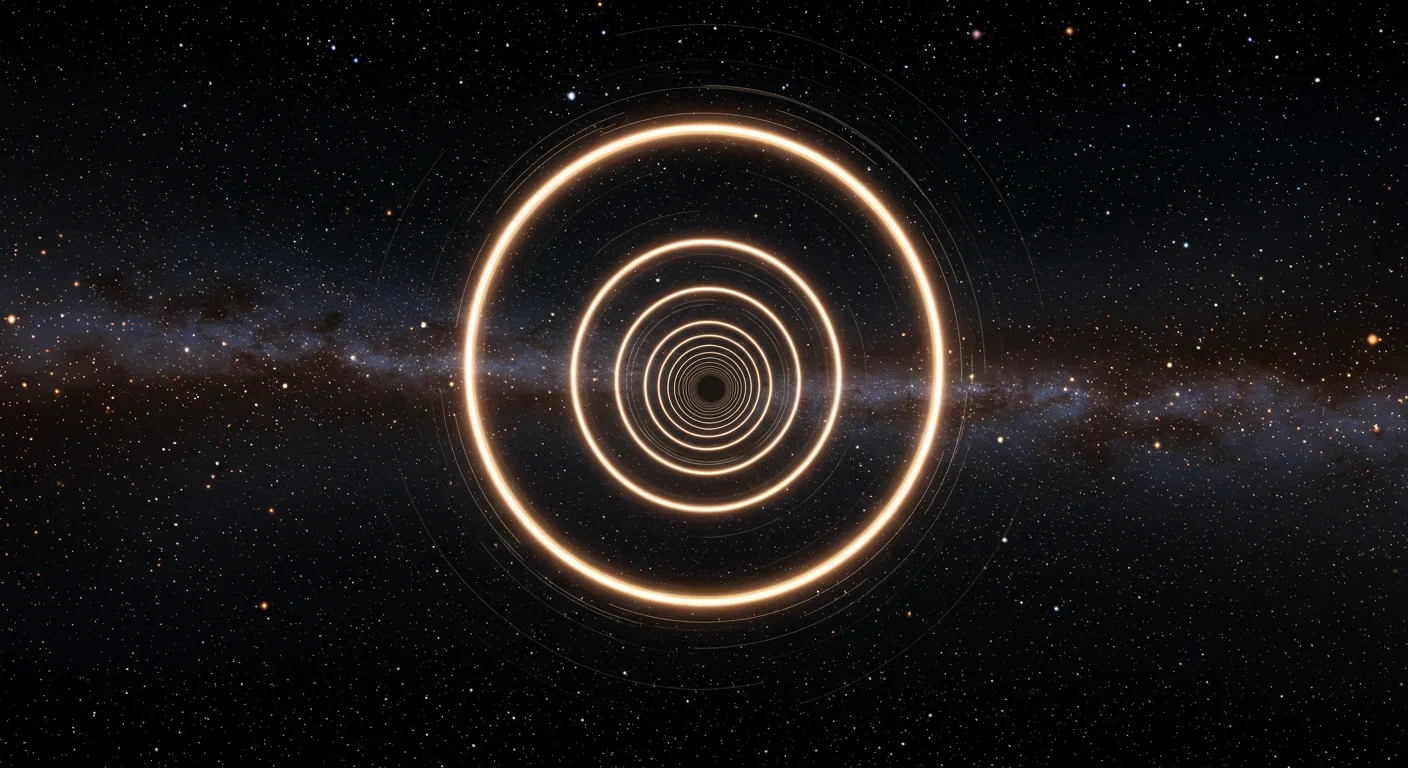
Wormholes collapse instantly because they require exotic matter with negative energy that doesn't exist in useful quantities, and quantum instabilities destroy them faster than light can cross their throats, making spacetime shortcuts a physics impossibility.

Scientific studies reveal electromagnetic hypersensitivity sufferers experience genuine symptoms but cannot detect EMF exposure better than chance, pointing to the nocebo effect rather than electromagnetic fields as the primary cause.
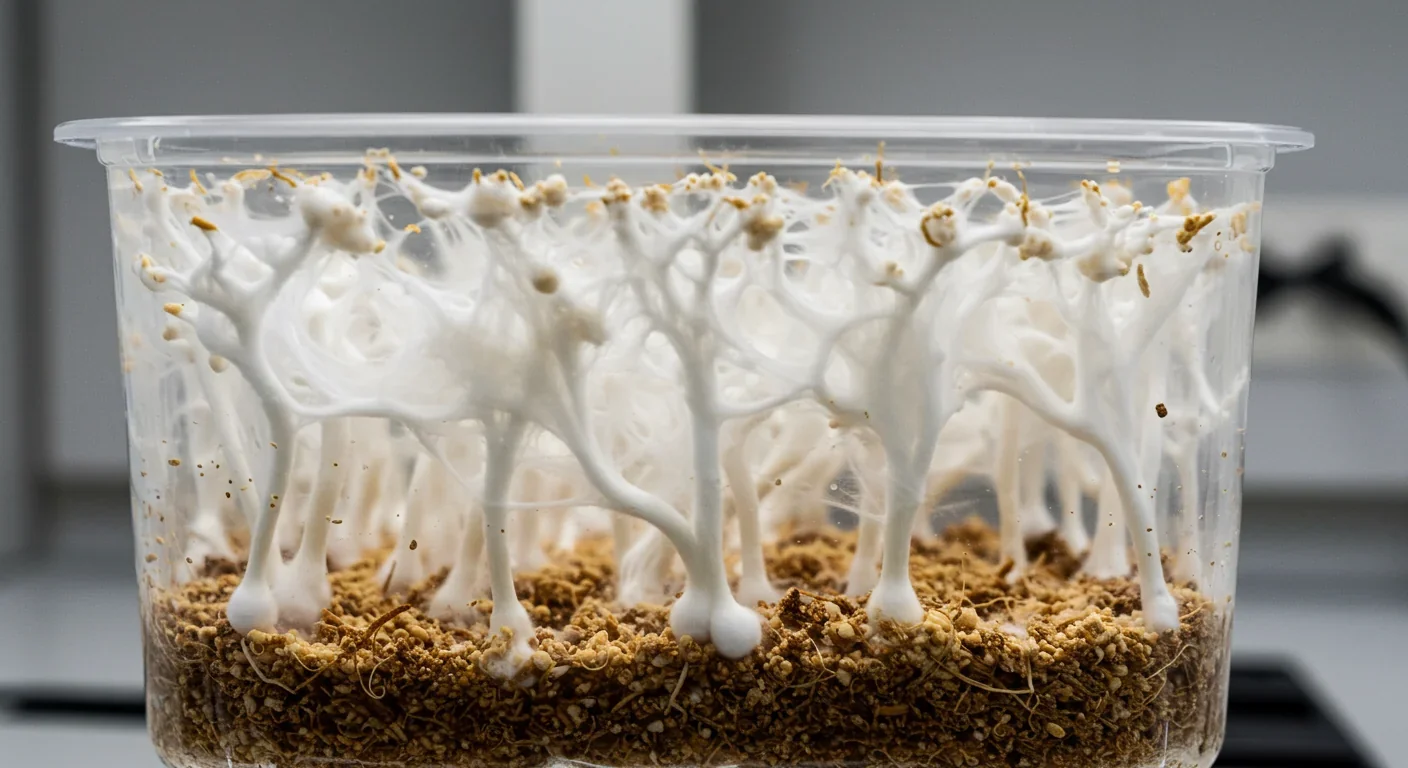
Mycelium packaging grows from agricultural waste in days, decomposes in weeks, and is already shipping in Dell computers and IKEA furniture—proving fungi can replace foam.

Our attraction to impractical partners stems from evolutionary signals, attachment patterns formed in childhood, and modern status pressures. Understanding these forces helps us make conscious choices aligned with long-term happiness rather than hardwired instincts.
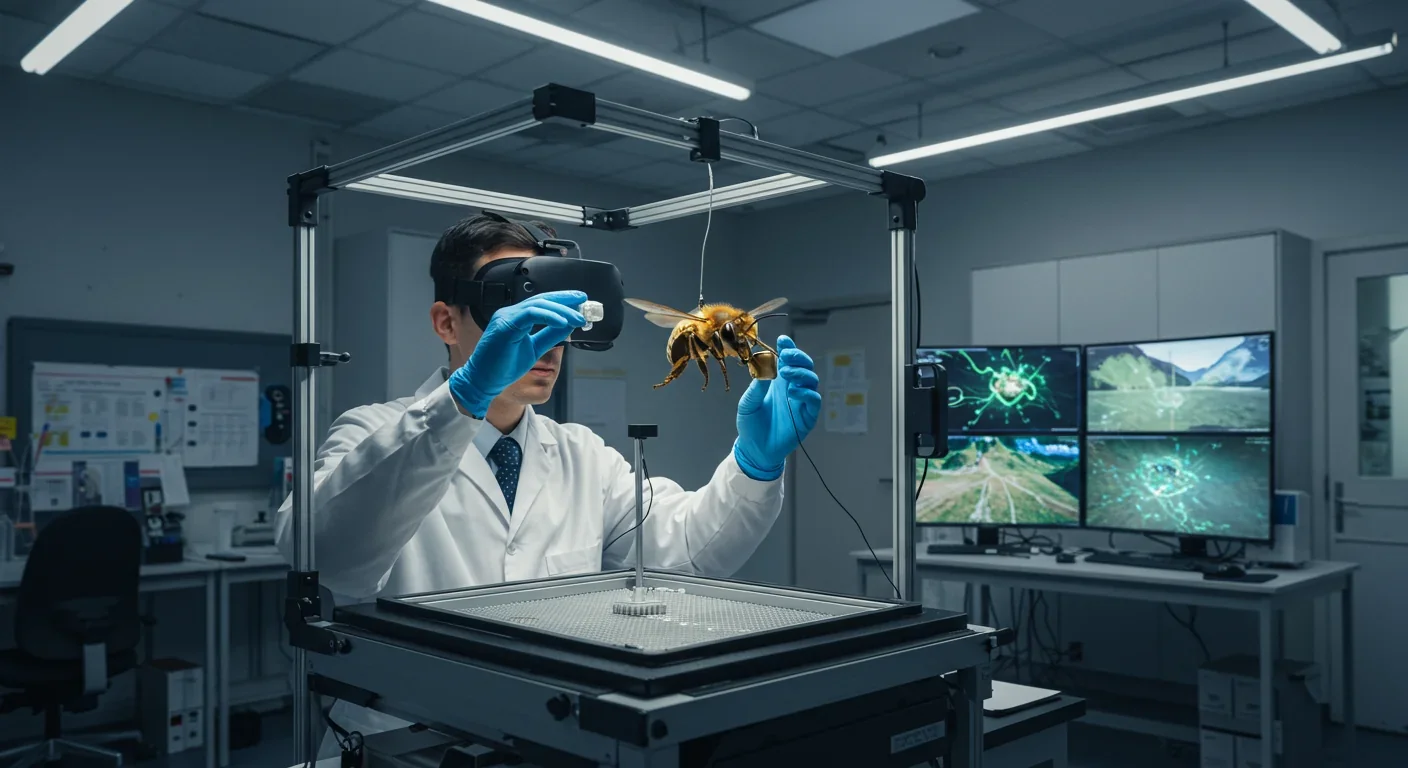
Virtual reality experiments are revealing how honeybees form sophisticated cognitive maps with brains smaller than sesame seeds, revolutionizing our understanding of intelligence and inspiring energy-efficient robots while guiding pollinator conservation.
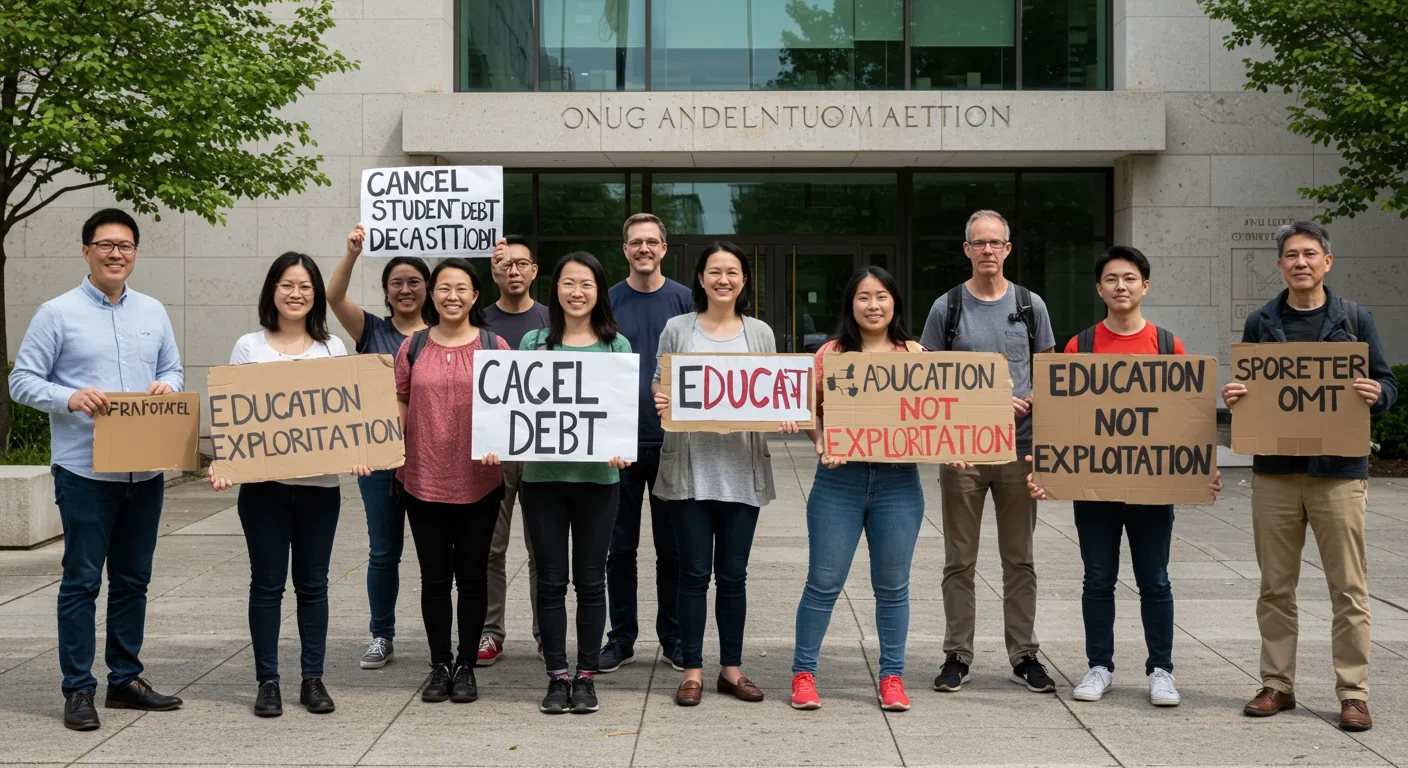
Millions of student loan borrowers are refusing to repay as an organized protest against a $1.77 trillion debt system they view as exploitative. With one in three borrowers at risk of default by 2025, this movement challenges whether the entire higher education financing model can survive.

Blockchain-based social networks like Bluesky, Mastodon, and Lens Protocol are growing rapidly, offering user data ownership and censorship resistance. While they won't immediately replace Facebook or Twitter, their 51% annual growth rate and new economic models could force Big Tech to fundamentally change how social media works.